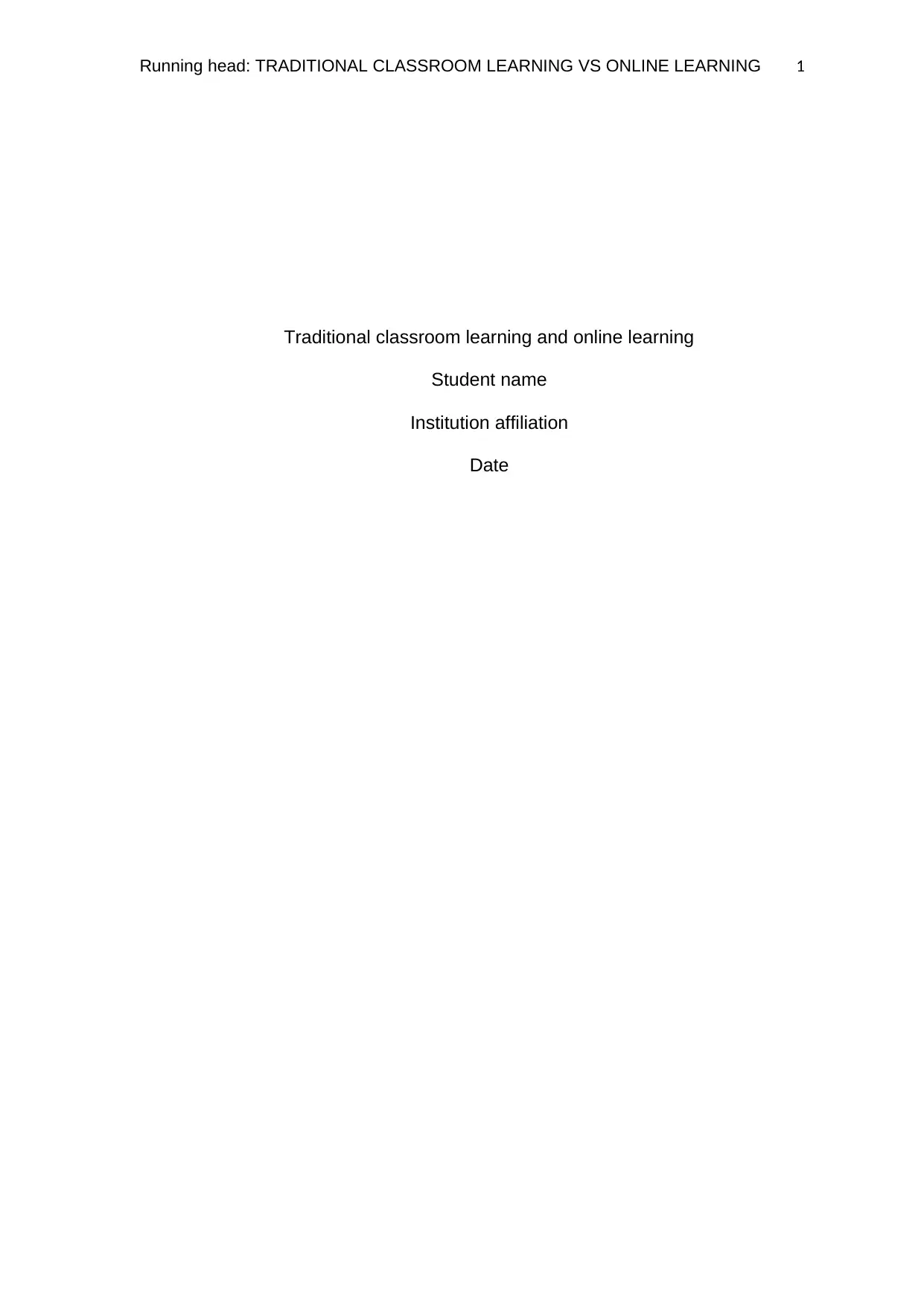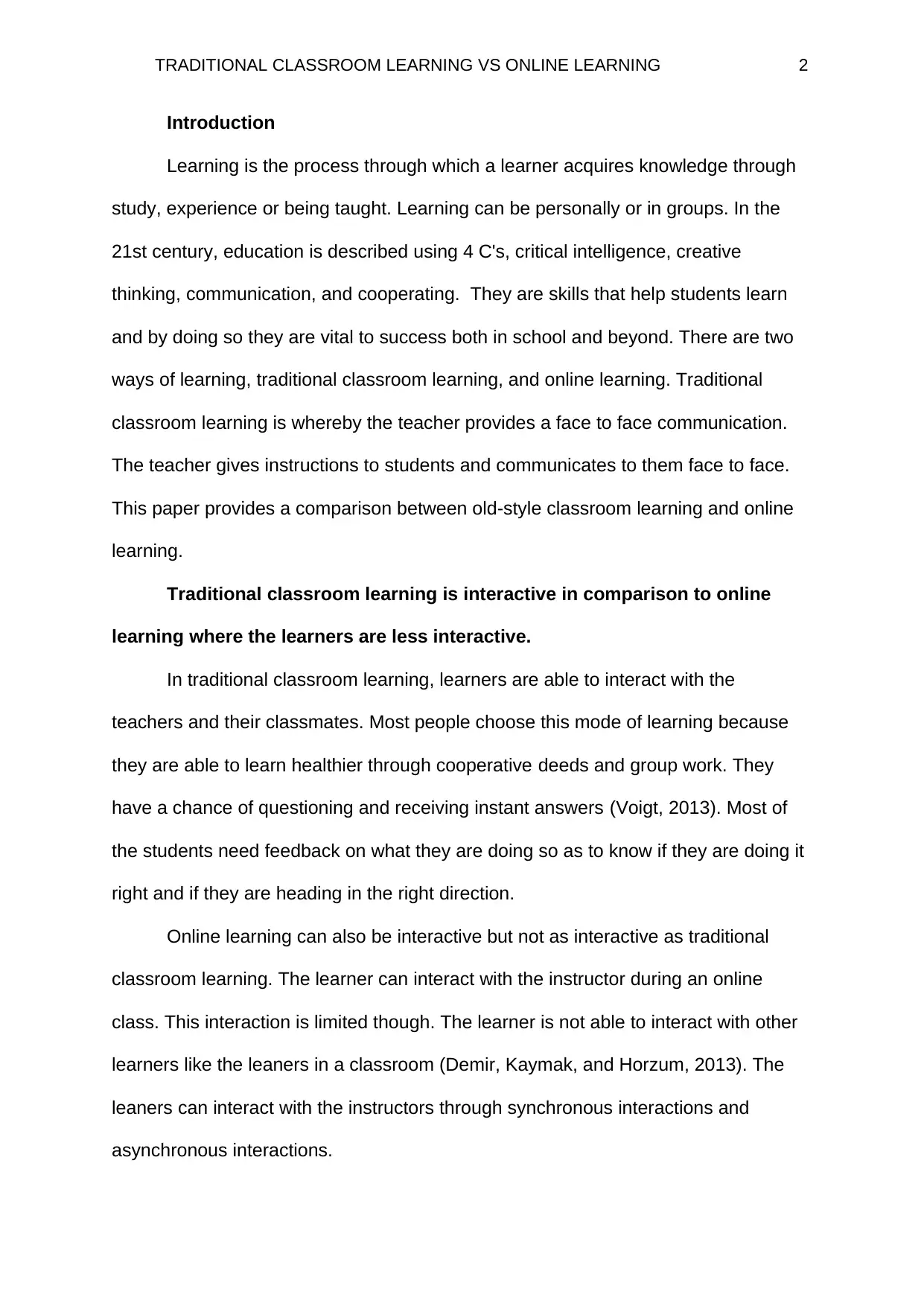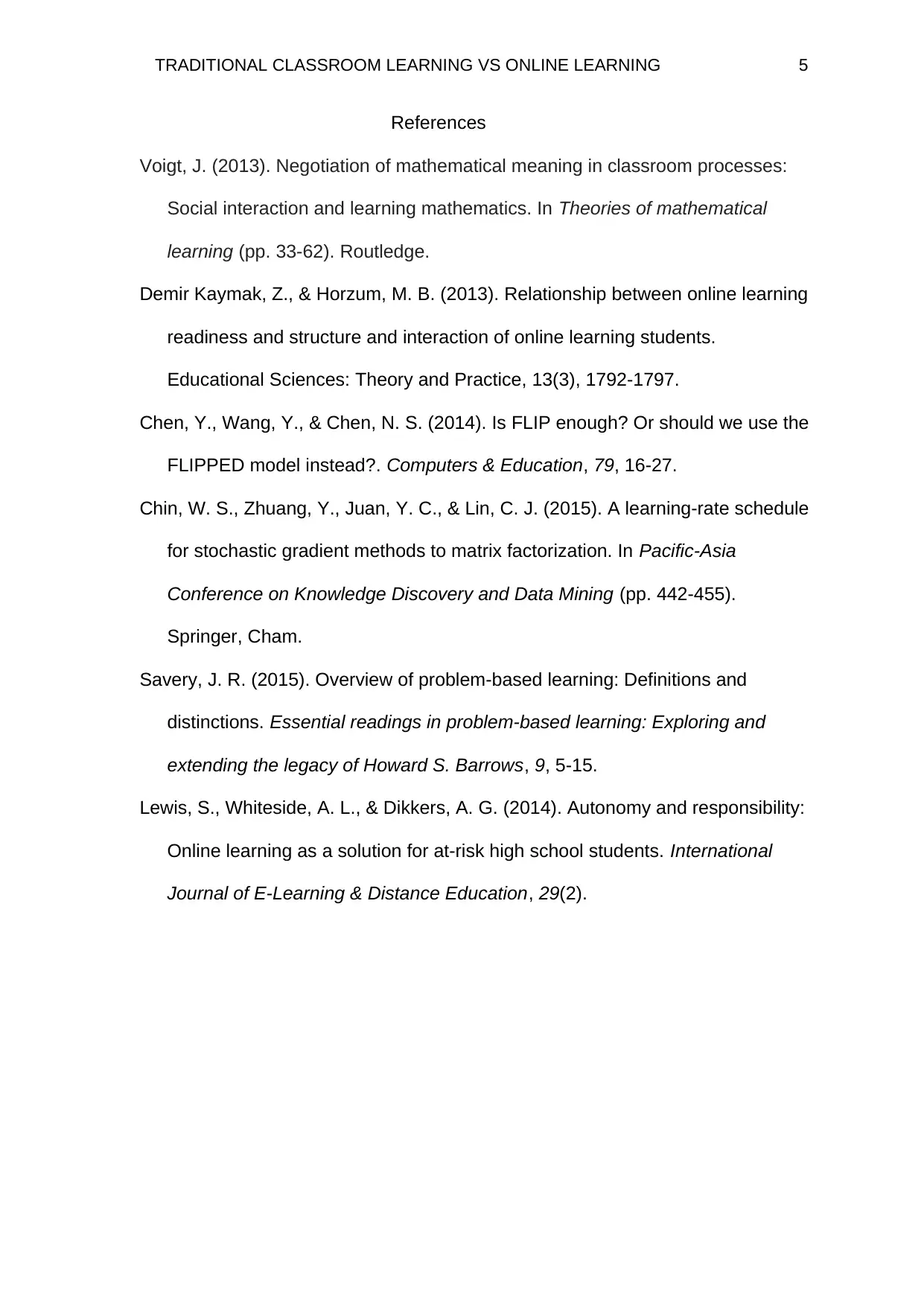An Analysis: Traditional Classroom Learning vs Online Learning
VerifiedAdded on 2023/06/04
|5
|1017
|62
Essay
AI Summary
This essay provides a comparative analysis of traditional classroom learning and online learning environments. It explores the key differences between the two modes of education, focusing on aspects such as interaction, flexibility, and student motivation. The paper highlights the interactive nature of traditional classrooms, contrasting it with the often-limited interaction in online settings. It also discusses the structured schedule of traditional learning versus the flexibility offered by online platforms, which is particularly beneficial for adult learners balancing work and family commitments. Furthermore, the essay examines the motivational aspects of each environment, noting the focused atmosphere of traditional classrooms compared to the self-discipline required for online learning. The conclusion emphasizes that the optimal learning environment depends on individual student traits and commitments. The paper incorporates external sources to support its arguments, offering a well-rounded perspective on the advantages and disadvantages of each learning method.
1 out of 5












![[object Object]](/_next/static/media/star-bottom.7253800d.svg)